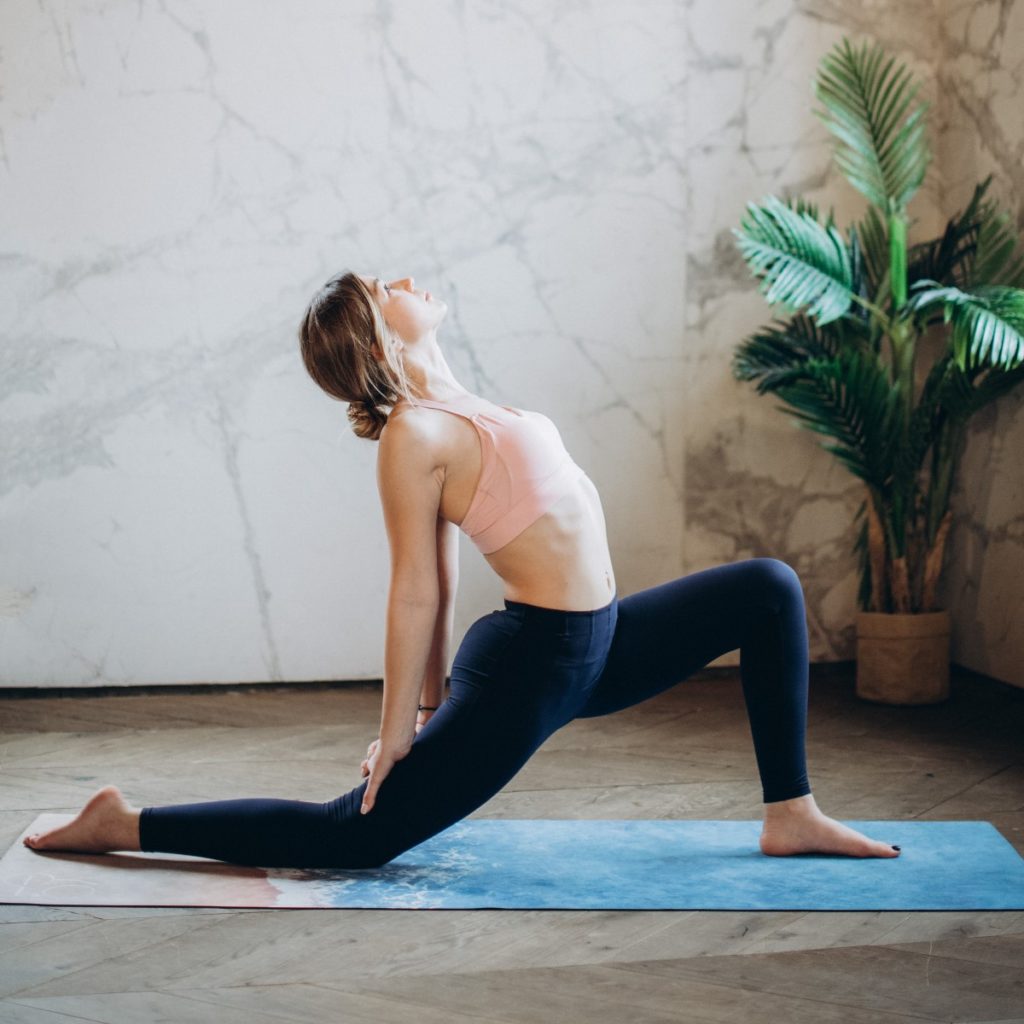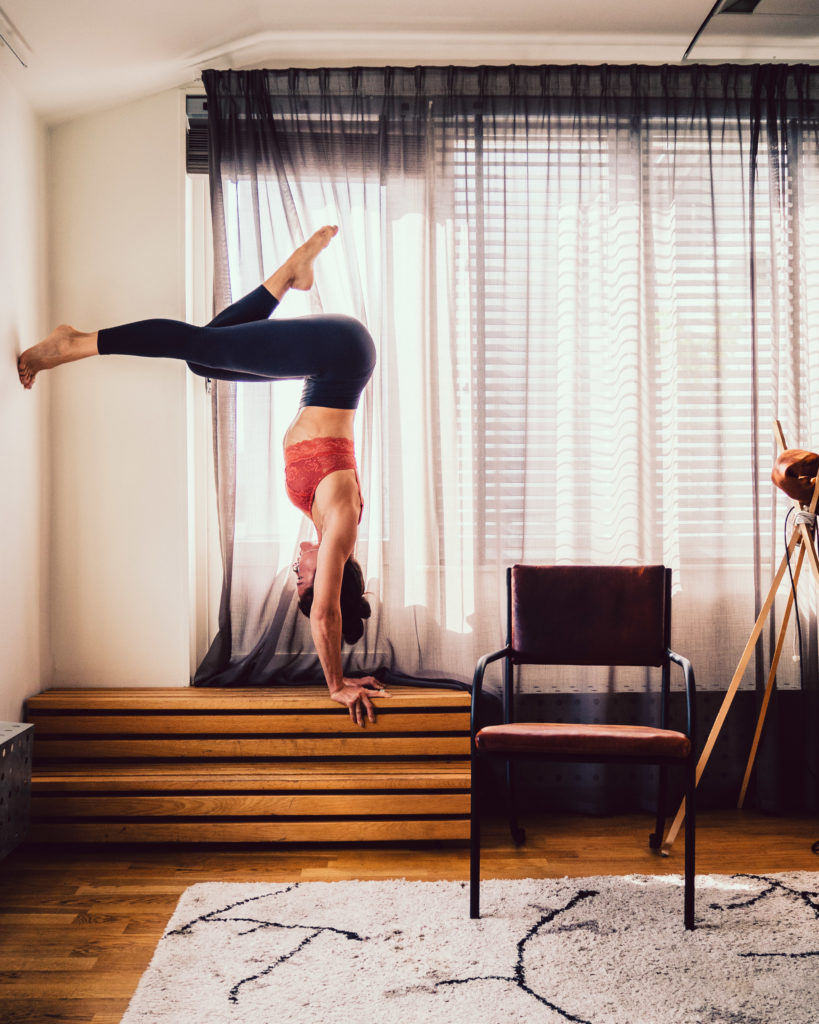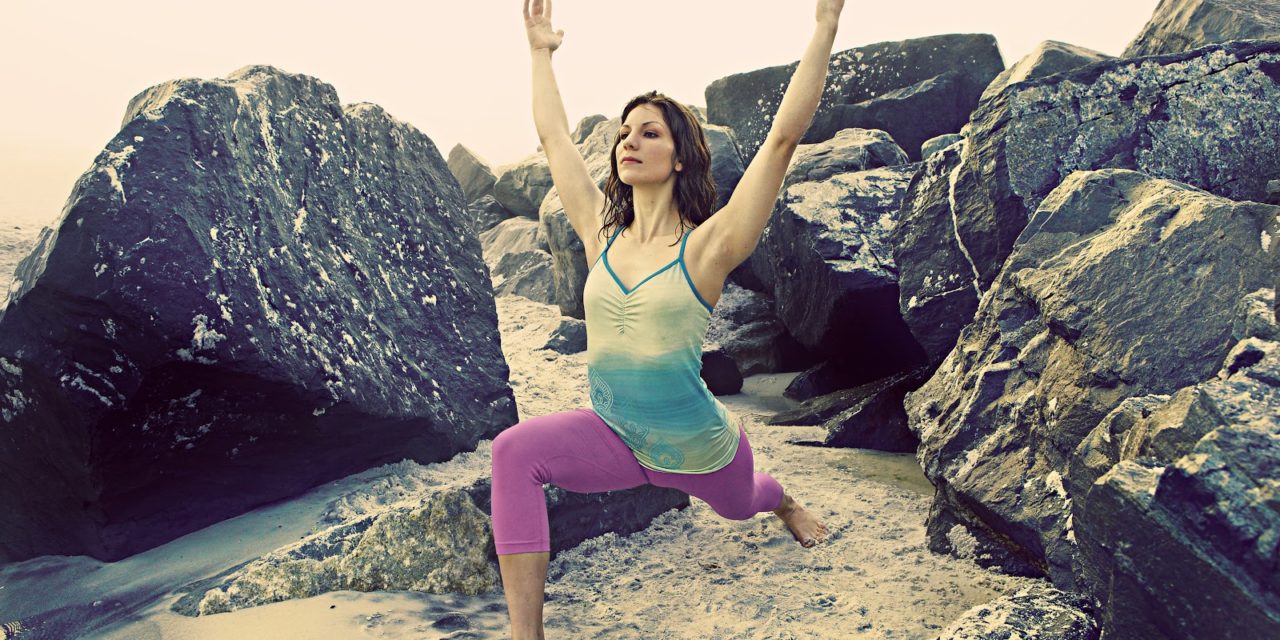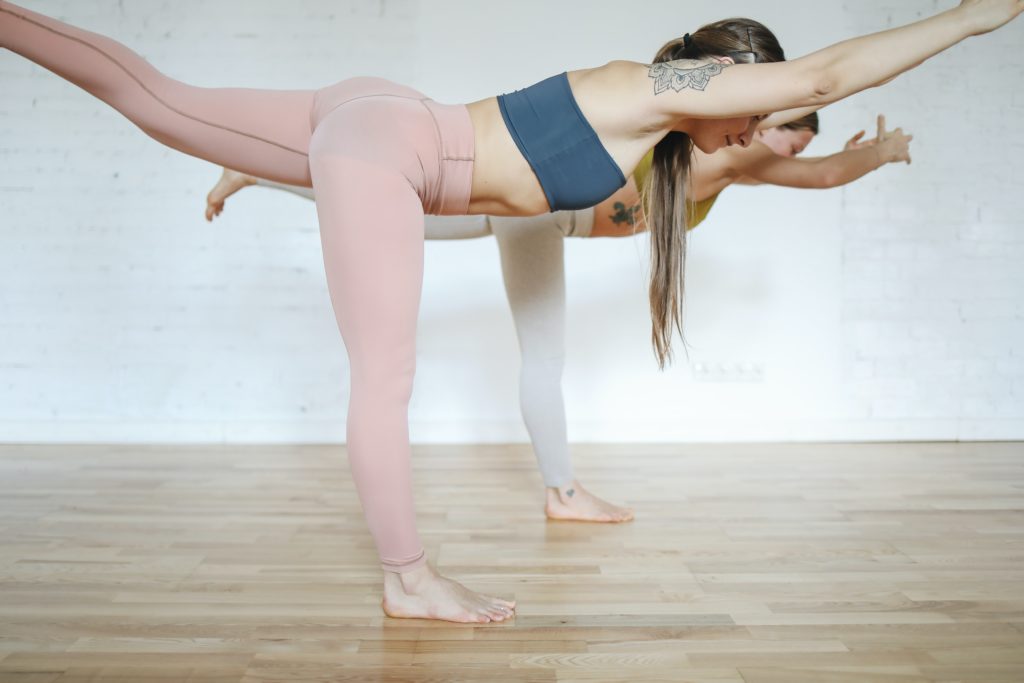Warrior I variation of Crescent Lunge, photo by Sarah Peters
Any rock climber could see significant gains in their climbing from a regular yoga practice, but as the yoga asanas near 84 in number, some of us might be hard-pressed to find the time for a regular yoga practice.
As a yoga teacher for nearly 6 years and a rock climber for 10, when I practice yoga regularly, I find my body more flexible, my breathing more controlled, and my antagonist muscles activated, ready to protect me in difficult climbing movements. Including a yoga class as part of your climbing training can be time-intensive, so I’ve nailed down the 3 yoga movements that I find essential for improving your rock climbing.
If you only do three yoga poses in your climbing-life, I would suggest these three essential poses: Crescent Lunge with interlaced hands, Warrior III, and Handstand. It is a common assumption that in order to do yoga, one must attend a 60 to 75 minute class, but this is not true. Yoga by definition is a combination of meditation, manipulation of the breath, and of postures, called asanas.
Yoga to the ancient gurus and teachers is different from the yoga found in your local exercise studio. The Sanskrit meaning of yoga is defined simply as a union ᠆ a union of mind and body. In climbing, we strive to perfect performance by perfecting our own mind-body connection. If we can see a foothold and plant our toe perfectly on a small edge while in motion and activate the power of the breath to relax, we are also practicing yoga. In such, a yoga practice can be as simple as meditating or practicing these three yoga poses in your own home.
These yoga poses are advanced, but modifications can be made for beginners.
3 Essential Yoga Poses for Rock Climbers
Tip: Try these yoga poses after a 5 minute meditation practicing Ujjayi breath in order to fire up the body.
1. CRESCENT LUNGE with Interlocked Arms
Benefits Summary: Postural correction, High step advantage, Inner thigh strength, Shoulder opening, Chest opening, Relaxation
The benefits of yoga are wide and long-lasting. One of the key benefits I found from yoga was an improvement in posture. A regular practice of crescent lunge or low lunge offers increased hip flexibility and will strengthen your inner thighs and buttocks. Stretching the hip flexors, combined with strengthening the core and obliques, will help with high foot placements and can correct Lordosis, a common postural problem in rock climbers.

Modify by placing the knee down for a Low Lunge with a lean back. Interlace hands to get the full benefit.
Key points:
- Make sure your hips are in line with each other, hip bones facing the front of the mat like two headlights.
- Activate your legs, always with a slight bend in the back leg.
- Draw your belly into your spine as if you are sucking your tummy in to show off your abs, to tilt the hips back.
- Keep shoulders down and away from the ears.
- Make sure your front knee is directly over your ankle in a 90 degree angle, rather than letting your knee slide in front of your toes.
- Interlace the hands together, matching the wrists together and drawing the shoulder blades down and together.
Modify with a more relaxed version focusing on opening by lowering the back knee to the ground. Check in with your shoulders, lower them down away from your neck and relax your face. Interlacing your hands opens the biceps and the front of the shoulder, stretching out key pectoral muscles responsible for preventing a climber’s hunchback.
Benefits Summary: Hamstring strengthening, Can help alleviate back pain, Shoulder antagonist training, Improves balance, Stabilizes ankles to prevent injur
From your crescent lunge, release the interlaced arms and slowly shift your weight into your front foot. Slowly, with control, keep shifting forward until you are standing on one foot. Then begin to lower the upper body, arms by your side, as your head moves toward the floor. Begin by separating the hands at the hips, palms down, into an airplane balance position. If you would like to move to a full Warrior III, reach the hands in front of your head in prayer or separated (palms facing each other). Maintain a straight line from toe to hands, arms as an extension of your floating foot.
Although advanced, the addition of the hands stretched in front of the head adds valuable training in the stabilizing muscles key for preventing shoulder injuries. A great way to modify this is to place the hands on a wall while performing the full expression.
Key points:
- Make sure your hips are even. The floating leg’s hip tends to rise up, so lower it down to be even with the standing leg hip.
- Keep a slight bend in the supporting leg.
- Remember to breathe slowly and evenly.
- Keep shoulders down and away from the ears, biceps by the ear.
My favorite part about Warrior III is the killer hamstring strengthening and stretching. Training my hamstrings and glutes helped me solve the chronic back pain I get from sitting in a harness for hours. By adding some movement, you can increase your hamstring training by mimicking the motion of a single-leg deadlift. Maintain your balance on one leg and slowly lift the torso up (release the arms if necessary) until standing upright. Staying on one leg, move the torso back down until finding your bent over position once more. Repeat 3-5x.

Photo: Tiffany Soi
3. HANDSTAND L (feet against the wall)
Benefits Summary: shoulder opening, core strengthening, flexor stretch, improved body tension, balance, antagonist shoulder strength and injury prevention, and wrist extensor stretching.
The handstand’s wide range of benefits are key to why I find it one of the most essential yoga poses for climbers. The handstand is a perfect way to learn full body tension, a mandatory skill for difficult steep climbing moves on a board or a roof.
The most obvious benefit of handstands is the opening of the shoulders. In order to properly perform a handstand, a great amount of shoulder mobility is required, something climbers struggle with. Climbers often perform handstands purely with strength and bad form. Key things to watch out for are: if your arms are bent, if your head protrudes away from your body, or if your legs bend or make a ‘v.’ Correct handstand form will train antagonists in the shoulders and provide the flexibility necessary to prevent shoulder injuries. Tom Randall from Lattice Training stated that shoulder mobility offers an advantage for climbing on vertical terrain.
According to Arhantayoga, a regular practice of handstand can ‘remove mental fatigue, depression and anxiety, improve memory and concentration, improve body posture, improve blood circulation to the body’ and much more.
Key points for handstand in an ‘L’ shape:
- Relax the shoulders away from the ears while maintaining a pushing feeling into the floor.
- Pull the belly in to place the torso in a straight line.
- Tuck in your chin to start with. To maintain balance, try to look at your hips.
- Make sure your hands are directly under your shoulders (this will feel MUCH HARDER than if you are bent in the torso). Aim for a straight line from hands to hips.
- Place feet flat on the wall, legs coming straight out of the hips.
I prefer to do handstands against the wall in order to gain the benefits of the shoulder training, hamstring stretch, and core strengthening without the difficulty of balancing. The full vertical expression of the pose can also be done up against a wall, before moving away from the wall.
With a regular practice of these three poses, you will undoubtedly see an improvement in your climbing and gain an advantage against injury. Enjoy the benefits of flexibility, relaxation and antagonist training, while improving rock climbing skills such as your high steps, moves requiring body tension, and strength on vertical terrain.
Explore More
Related articles you'll loveAt Home Rock Climbing Training with Climber Yoga
Teaching Yoga to the Toughest Alpine Climbers in the World
5 Yoga Poses for Crack Climbing Performance
Best Outdoor Underwear for Rock Climbing (Women’s Edition)
Get daily content updates by Liking us on Facebook









